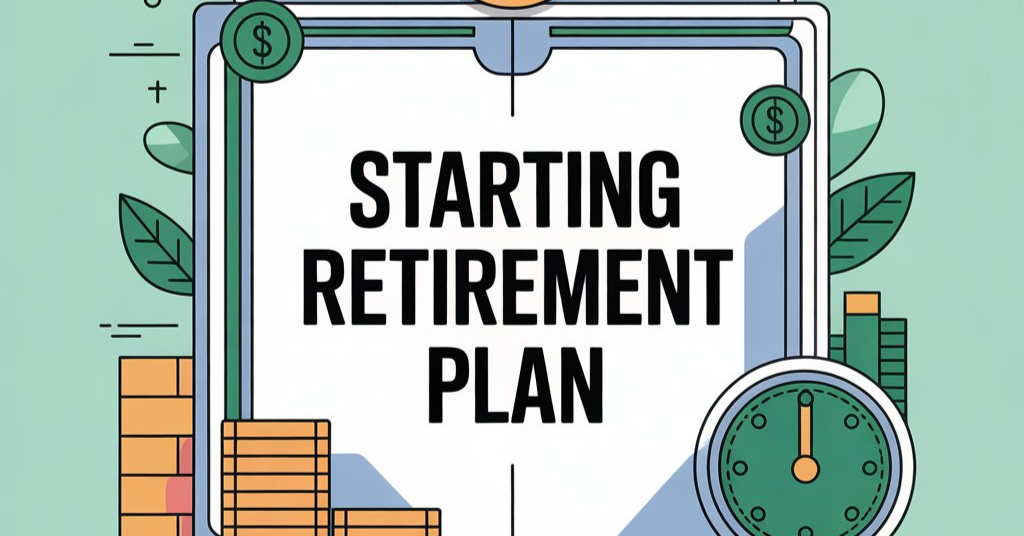Planning for retirement is essential to ensure financial security, independence, and a comfortable lifestyle in your later years. Many Australians underestimate the amount they need for retirement or delay saving, which can lead to stress in the future. This guide starting retirement plan will explain step-by-step how to start your retirement plan, including calculations, examples, and strategies suited to Australian conditions.
Understanding Retirement Planning in Australia
Retirement planning involves setting financial goals for your retirement and choosing strategies to achieve them. In Australia, it often includes a mix of Superannuation, personal savings, investments, and government benefits like the Age Pension. The earlier you start, the more time your savings have to grow, thanks to compound interest.
Example:
If you contribute $500 monthly to your super fund with an annual return of 7%, in 30 years, it can grow to approximately $540,000. If you start 10 years later with the same contribution, it would only grow to about $200,000.
Guide Starting Retirement Plan
Assess Your Current Financial Situation
Before planning, evaluate your finances:
- Income: Salary, rental income, or business earnings.
- Expenses: Rent/mortgage, bills, loans, daily living costs.
- Assets: Property, shares, superannuation, savings.
- Liabilities: Loans, credit card debts, personal debts.
This assessment will help determine how much you can allocate for retirement.
Define Your Retirement Goals
Think about what retirement looks like for you:
- Retirement Age: Australians can access superannuation from age 60–65 depending on birth year.
- Lifestyle: Travel plans, hobbies, or downsizing housing.
- Location: Staying in your current home or relocating to a regional area.
Your goals will define your retirement savings target.
Example:
If you want $60,000 per year to live comfortably, accounting for 20 years in retirement, you may need $1.2 million, excluding government support.
Estimate Your Retirement Expenses
Retirement expenses differ from your working years. Consider:
- Healthcare Costs: Medicare may cover basics, but private health insurance helps.
- Lifestyle Choices: Dining out, travel, hobbies.
- Inflation: Australia’s inflation averages 2–3% annually.
Example Calculation:
If your current expenses are $4,000/month, in 25 years, with 2.5% inflation, monthly expenses could reach around $7,800.
Know Your Retirement Income Sources
Australians typically rely on:
- Superannuation: Mandatory employer contributions.
- Personal Savings: Bank accounts, ETFs, or managed funds.
- Government Age Pension: Means-tested support for eligible retirees.
- Investments: Property, shares, bonds.
- Annuities: Provides a regular income stream.
Diversifying these income sources reduces financial risk.
Superannuation Contributions and Strategies
Superannuation is the foundation of Australian retirement planning:
- Employer Contributions (SG): Currently 11% of ordinary earnings.
- Voluntary Contributions: Salary sacrifice or after-tax contributions.
- Government Co-contributions: If eligible, can boost your balance.
Example:
Salary: $80,000 per year
Employer super (11%): $8,800/year
Voluntary contribution: $5,000/year
Total annual contributions: $13,800
Over 30 years with 7% growth: ~$1.1 million
Investment Options in Retirement Planning
Your retirement fund can grow faster with the right investments:
- Equities (Shares): High returns but more risk.
- Bonds: Lower risk, stable returns.
- Property: Long-term capital growth and rental income.
- Managed Funds/ETFs: Diversified portfolios.
Example:
Investing $500/month in a diversified share fund with 8% annual return over 30 years = ~$540,000.
Tax Considerations
Australia offers tax benefits for retirement savings:
- Concessional Contributions: Up to $27,500/year taxed at 15% in super.
- Non-concessional Contributions: Up to $110,000/year after tax.
- Super Withdrawals: Tax-free after age 60 if in a retirement phase account.
Planning contributions strategically reduces tax liability.
Withdrawal Strategy in Retirement
When you retire, you need a strategy to access funds sustainably:
- Systematic Withdrawals: Withdraw a set amount monthly from super.
- Annuities: Convert a lump sum into guaranteed income.
- Portfolio Drawdowns: Use dividends, interest, or sell investments.
Example:
Retirement balance: $1 million
Annual withdrawal: 4% ($40,000/year) to maintain funds over 25 years.
Plan for Healthcare Costs
Healthcare can be a major expense in retirement:
- Private Health Insurance: Helps cover treatments not covered by Medicare.
- Dental and Vision: Usually not fully covered.
- Long-Term Care Costs: Planning for aged care or home assistance.
Estate Planning
Ensure your wealth is distributed according to your wishes:
- Will: Legal document specifying beneficiaries.
- Power of Attorney: Appoints someone to manage your finances if needed.
- Super Beneficiaries: Nominate beneficiaries for superannuation.
Review and Adjust Your Plan Regularly
Your retirement plan should evolve with your life:
- Review investments annually.
- Adjust contributions if salary or expenses change.
- Update goals for lifestyle, healthcare, or relocation.
Tips to Boost Your Retirement Savings
- Start early to benefit from compound interest.
- Maximise employer and voluntary super contributions.
- Diversify investments to balance risk and returns.
- Minimise debt before retirement.
- Use online retirement calculators to monitor progress.
Example Calculation:
If you start contributing $300/month at age 30, growing at 7% annually, you could accumulate ~$395,000 by age 65. Starting at 40 with the same contributions grows to ~$185,000.
Also Check: Retirement Savings Superannuation Advice: A Guide for Australians
Conclusion
Starting a retirement plan in Australia requires careful consideration of your income, expenses, lifestyle goals, and investment options. By assessing your current finances, setting realistic goals, and taking advantage of superannuation and government support, you can secure a comfortable and stress-free retirement.
Remember, it’s never too early or too late to start. The key is consistent saving, smart investing, and regular reviews of your plan. Begin today to enjoy a financially independent future tomorrow.



